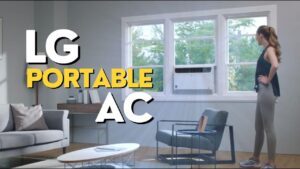
Different Types of Health Insurance Plans
Navigating health insurance can be complex, but understanding the different types of plans can help you make an informed decision. Here are the main types of health insurance plans:
1. Health Maintenance Organization (HMO):
- Network Restrictions: Requires you to use a network of doctors and hospitals.
- Primary Care Physician (PCP): You need to choose a PCP who coordinates your care and provides referrals to specialists.
- Lower Costs: Generally has lower premiums and out-of-pocket costs.
2. Preferred Provider Organization (PPO):
- Flexibility: Offers more flexibility in choosing healthcare providers and does not require referrals to see specialists.
- Higher Costs: Typically has higher premiums and out-of-pocket costs compared to HMOs.
- Out-of-Network Coverage: Covers out-of-network care, but at a higher cost.
3. Exclusive Provider Organization (EPO):
- Network Restrictions: Similar to PPOs but does not cover out-of-network care except in emergencies.
- No Referrals Needed: You do not need referrals to see specialists.
- Moderate Costs: Generally has lower premiums than PPOs but higher than HMOs.
4. Point-of-Service (POS) Plan:
- Combination of HMO and PPO: Requires a PCP and referrals for specialists like an HMO but allows out-of-network care like a PPO.
- Moderate Costs: Costs are typically between those of HMOs and PPOs.
5. High-Deductible Health Plan (HDHP):
- Higher Deductibles: Has higher deductibles and lower premiums.
- HSA Eligibility: Can be paired with a Health Savings Account (HSA) for tax-advantaged savings.
- Preventive Care: Often covers preventive services at no cost before meeting the deductible.
6. Catastrophic Plan:
- Low Premiums, High Deductibles: Designed for young, healthy individuals under 30 or those who qualify for a hardship exemption.
- Basic Coverage: Covers essential health benefits after a high deductible is met.
- Preventive Care: Includes three primary care visits per year and preventive services at no cost.
Comparing Prescription Drug Coverage
When comparing prescription drug coverage across different plans, consider the following:
- Formulary: Check the list of covered medications and their tiers.
- Cost Sharing: Look at copayments, coinsurance, and deductibles for medications.
- Pharmacy Network: Ensure your preferred pharmacy is in-network.
- Mail-Order Options: Some plans offer discounts for mail-order prescriptions.
Vision and Dental Coverage
Vision Insurance:
- Coverage: Includes routine eye exams, glasses, contact lenses, and sometimes discounts on corrective surgeries.
- Plans: Can be standalone or bundled with dental insurance.
Dental Insurance:
- Coverage: Covers preventive care (cleanings, exams), basic procedures (fillings, extractions), and major procedures (crowns, root canals).
- Plans: Available as standalone or bundled with vision insurance.
Understanding these different types of health insurance plans and their features can help you choose the best option for your needs and budget. If you have any more questions or need further assistance, feel free to ask!
What are the benefits of EPO plans?
Benefits of EPO Plans
Exclusive Provider Organization (EPO) plans offer a blend of features from both HMO and PPO plans. Here are some key benefits:
- No Referrals Needed: You can see any specialist within the network without needing a referral from a primary care physician (PCP).
- Lower Costs: EPO plans generally have lower premiums and out-of-pocket costs compared to PPO plans.
- Flexibility: While you must stay within the network, you have the freedom to choose any in-network provider without needing a PCP.
- Emergency Coverage: EPOs cover emergency care at in-network rates, even if the emergency occurs out-of-network.
How do you compare catastrophic and HDHP options?
Comparing Catastrophic and HDHP Options
Catastrophic Plans:
- Eligibility: Available only to individuals under 30 or those who qualify for a hardship exemption.
- Coverage: Covers essential health benefits after a high deductible is met and includes three primary care visits per year before the deductible.
- Premiums: Typically have the lowest premiums but the highest deductibles.
- No HSA: Not eligible for Health Savings Accounts (HSAs).
High-Deductible Health Plans (HDHPs):
- Eligibility: Available to anyone who meets the plan’s requirements.
- Coverage: Covers preventive care services at no cost before meeting the deductible.
- Premiums: Lower premiums compared to traditional plans but higher than catastrophic plans.
- HSA Eligibility: Can be paired with an HSA for tax-advantaged savings.
Comparison:
- Costs: Catastrophic plans have lower premiums but higher out-of-pocket costs. HDHPs have moderate premiums and out-of-pocket costs.
- Savings Options: HDHPs offer the benefit of HSAs, which can help manage healthcare expenses.
- Eligibility: Catastrophic plans have stricter eligibility criteria compared to HDHPs.
Explain more about preventive care coverage under different health plans.
Preventive Care Coverage Under Different Health Plans
Preventive care services are designed to prevent illnesses or detect them early when treatment is more effective. Here’s how different plans cover preventive care:
General Coverage:
- Most health plans, including those available through the Health Insurance Marketplace, must cover a set of preventive services at no cost when provided by in-network providers.
HMO Plans:
- Coverage: Preventive services like vaccinations, screenings, and annual check-ups are covered at no cost.
- Network Restrictions: Services must be provided by in-network providers.
PPO Plans:
- Coverage: Similar to HMOs, preventive services are covered at no cost.
- Flexibility: You can see out-of-network providers, but you may incur additional costs.
EPO Plans:
- Coverage: Preventive services are covered at no cost when using in-network providers.
- No Out-of-Network Coverage: Preventive care must be received within the network.
HDHPs:
- Coverage: Preventive services are covered at no cost before meeting the deductible.
- HSA Use: You can use HSA funds to pay for other medical expenses.
Preventive care services typically include:
- Annual Physicals: Routine check-ups to monitor overall health.
- Vaccinations: Immunizations for diseases like flu, measles, and hepatitis.
- Screenings: Tests for conditions such as high blood pressure, cholesterol, and cancer.
- Counseling: Services like diet and tobacco cessation counseling.
Understanding your plan’s preventive care coverage can help you take advantage of these services to maintain good health and catch potential issues early.
If you have any more questions or need further assistance, feel free to ask!
What are the drawbacks of EPO plans?
Drawbacks of EPO Plans
Exclusive Provider Organization (EPO) plans have several limitations:
- Limited Network: EPOs require you to use a network of doctors and hospitals. If you seek care outside this network, except in emergencies, you will have to pay the full cost.
- Narrow Networks: Some EPOs have narrow networks, which can limit your choice of doctors and specialists.
- No Out-of-Network Coverage: Unlike PPOs, EPOs do not cover out-of-network care, except for emergencies.
- Potential for Higher Out-of-Pocket Costs: If you need specialized care that is not available within the network, you may face higher out-of-pocket costs.
How do you choose between HMO and PPO options?
Choosing Between HMO and PPO Options
When deciding between Health Maintenance Organization (HMO) and Preferred Provider Organization (PPO) plans, consider the following factors:
HMO Plans:
- Cost: Generally have lower premiums and out-of-pocket costs.
- Network: Require you to use a network of doctors and hospitals.
- Primary Care Physician (PCP): You must choose a PCP who coordinates your care and provides referrals to specialists.
- Referrals: Necessary for seeing specialists.
PPO Plans:
- Cost: Typically have higher premiums and out-of-pocket costs.
- Network: Offer more flexibility in choosing healthcare providers and cover out-of-network care at a higher cost.
- No PCP Requirement: You do not need to select a PCP or get referrals to see specialists.
- Flexibility: Greater flexibility in choosing doctors and hospitals.
Comparison:
- Cost: HMOs are usually cheaper but more restrictive, while PPOs offer more flexibility at a higher cost.
- Provider Choice: PPOs allow out-of-network care, whereas HMOs require you to stay within the network.
- Referrals: HMOs require referrals from a PCP to see specialists, while PPOs do not.
Explore more about mental health coverage under different health plans.
Mental Health Coverage Under Different Health Plans
Mental health coverage is an essential part of health insurance plans, and the level of coverage can vary:
General Coverage:
- Parity Law: The Mental Health Parity and Addiction Equity Act requires that mental health and substance use disorder benefits be comparable to medical and surgical benefits.
HMO Plans:
- Coverage: Typically cover mental health services, but you must use in-network providers.
- Referrals: Often require referrals from your PCP for mental health services.
PPO Plans:
- Coverage: Offer more flexibility in choosing mental health providers, including out-of-network options.
- No Referrals Needed: You can see mental health specialists without needing a referral.
EPO Plans:
- Coverage: Cover mental health services within the network.
- No Out-of-Network Coverage: Do not cover out-of-network mental health services, except in emergencies.
HDHPs:
- Coverage: Cover mental health services, and you can use HSA funds to pay for these services.
- Preventive Care: Often cover preventive mental health services at no cost before meeting the deductible.
Understanding your plan’s mental health coverage is crucial for accessing the care you need. Always review your plan details to know what services are covered and any requirements for accessing them.
If you have any more questions or need further assistance, feel free to ask!
What are the key features of HDHPs?
Key Features of High-Deductible Health Plans (HDHPs)
- Higher Deductibles: HDHPs have higher deductibles compared to traditional health plans. For 2024, the minimum deductible is $1,650 for individual coverage and $3,300 for family coverage.
- Lower Premiums: These plans typically offer lower monthly premiums, making them attractive for those who want to minimize their monthly expenses.
- Health Savings Accounts (HSAs): HDHPs can be paired with HSAs, allowing you to save pre-tax dollars for qualified medical expenses. HSAs offer tax advantages and funds roll over year to year.
- Preventive Care Coverage: Many HDHPs cover preventive services like annual physicals, vaccinations, and screenings at no cost before meeting the deductible.
- Out-of-Pocket Maximums: HDHPs have a cap on out-of-pocket expenses, which includes deductibles, copayments, and coinsurance. For 2024, the maximum is $8,300 for individuals and $16,600 for families.
Explore more about HDHPs.
High-Deductible Health Plans (HDHPs)
A High-Deductible Health Plan (HDHP) is a health insurance plan with lower premiums and higher deductibles compared to traditional plans. Here’s what you need to know:
Pros:
- Lower Premiums: Monthly payments are generally lower than traditional plans.
- HSA Eligibility: HDHPs allow you to open and contribute to an HSA, offering tax advantages.
- Preventive Care Coverage: Many HDHPs cover preventive services at no cost before you meet your deductible.
Cons:
- Higher Out-of-Pocket Costs: You pay more out-of-pocket before your insurance starts covering expenses.
- Financial Risk: Unexpected medical expenses can be costly due to the high deductible.
Coverage Details:
- Deductibles: For 2025, the minimum deductible is $1,650 for individual coverage and $3,300 for family coverage.
- Out-of-Pocket Maximums: The maximum out-of-pocket expenses are $8,300 for individuals and $16,600 for families in 2025.
HDHPs can be a good choice if you’re generally healthy and want to save on premiums while having the option to save for future medical expenses through an HSA.
How do you compare HDHPs with other health insurance plans?
Comparing HDHPs with Other Health Insurance Plans
High-Deductible Health Plans (HDHPs):
- Lower Premiums: HDHPs typically have lower monthly premiums compared to other plans.
- Higher Deductibles: You pay more out-of-pocket before the insurance starts covering costs.
- HSA Eligibility: HDHPs are the only plans that allow you to open and contribute to an HSA.
- Preventive Care Coverage: Many HDHPs cover preventive services at no cost before meeting the deductible.
Preferred Provider Organization (PPO) Plans:
- Higher Premiums: PPOs generally have higher monthly premiums.
- Lower Deductibles: You pay less out-of-pocket before the insurance kicks in.
- Flexibility: PPOs offer more flexibility in choosing healthcare providers and do not require referrals to see specialists.
Health Maintenance Organization (HMO) Plans:
- Lower Premiums: HMOs often have lower premiums than PPOs but higher than HDHPs.
- Network Restrictions: You must use healthcare providers within the HMO network and get referrals for specialists.
- Coordinated Care: HMOs emphasize coordinated care through a primary care physician.
Explore more about preventive care coverage under HDHPs.
Preventive Care Coverage Under HDHPs
High-Deductible Health Plans (HDHPs) cover a range of preventive care services at no cost to you, even before you meet your deductible. These services include:
- Annual Wellness Exams: Routine check-ups to monitor overall health.
- Vaccinations: Immunizations for diseases like the flu, measles, and chickenpox.
- Screenings: Tests for conditions such as high blood pressure, depression, and HIV.
- Counseling: Services like diet and nutritional counseling.
Preventive care is essential for early detection and prevention of serious health issues, helping you maintain good health and potentially reducing long-term healthcare costs.
How do you find an in-network provider for your HDHP?
Finding an In-Network Provider for Your HDHP
To find an in-network provider for your High-Deductible Health Plan (HDHP):
- Insurance Provider’s Website: Most insurance companies have online directories where you can search for in-network providers by entering your location and plan details.
- Customer Service: Call your insurance company’s customer service for assistance in finding in-network providers.
- Healthcare.gov: Use tools available on Healthcare.gov to find in-network providers and covered services.
- Mobile Apps: Many insurance companies offer mobile apps that allow you to search for in-network providers on the go.
Explore more about PPO and HMO plans.
PPO and HMO Plans
Preferred Provider Organization (PPO) Plans:
- Flexibility: PPOs offer more flexibility in choosing healthcare providers. You can see specialists without a referral and use out-of-network providers, though at a higher cost.
- Higher Costs: PPOs generally have higher premiums and out-of-pocket costs compared to HMOs.
- No Primary Care Physician (PCP) Requirement: You don’t need to select a PCP or get referrals to see specialists.
Health Maintenance Organization (HMO) Plans:
- Lower Costs: HMOs typically have lower premiums and out-of-pocket costs.
- Network Restrictions: You must use healthcare providers within the HMO network, except in emergencies.
- Primary Care Physician (PCP) Requirement: You need to choose a PCP who coordinates your care and provides referrals to specialists.
Comparison:
- Costs: HMOs are usually cheaper but more restrictive, while PPOs offer more flexibility at a higher cost.
- Provider Choice: PPOs allow out-of-network care, whereas HMOs require you to stay within the network.
- Referrals: HMOs require referrals from a PCP to see specialists, while PPOs do not.
Choosing between an HMO and a PPO depends on your healthcare needs, budget, and preference for flexibility versus cost savings.
If you have any more questions or need further assistance, feel free to ask!
How do you compare HMO and HDHP options?
Comparing HMO and HDHP Options
Health Maintenance Organization (HMO) Plans:
- Lower Premiums: HMOs generally have lower premiums and out-of-pocket costs.
- Network Restrictions: You must use healthcare providers within the HMO network, except in emergencies.
- Primary Care Physician (PCP) Requirement: You need to choose a PCP who coordinates your care and provides referrals to specialists.
High-Deductible Health Plans (HDHPs):
- Lower Premiums: HDHPs also have lower premiums but come with higher deductibles.
- HSA Eligibility: HDHPs allow you to open and contribute to a Health Savings Account (HSA), offering tax advantages.
- Preventive Care Coverage: Many HDHPs cover preventive services at no cost before meeting the deductible.
Comparison:
- Costs: Both HMOs and HDHPs offer lower premiums, but HDHPs have higher deductibles.
- Provider Choice: HMOs require you to stay within their network, while HDHPs can be paired with PPOs or other plan types, offering more flexibility.
- Savings Options: HDHPs provide the added benefit of HSAs, which can be used to save for future medical expenses.
Explain more about emergency care coverage under different plans.
Emergency Care Coverage Under Different Plans
General Coverage:
- Most health insurance plans cover emergency services, even if you visit an out-of-network provider.
- The Affordable Care Act (ACA) mandates that emergency services must be covered at the same cost-sharing level as in-network services.
HMO Plans:
- Typically require you to use in-network providers, but emergency care is an exception. You can receive emergency services from any provider without penalty.
PPO Plans:
- Offer coverage for emergency services both in-network and out-of-network. You may pay more for out-of-network services, but they are still covered.
HDHPs:
- Similar to PPOs, HDHPs cover emergency services regardless of the provider’s network status. Preventive care is also covered without needing to meet the deductible.
Understanding your plan’s emergency care coverage is crucial to avoid unexpected costs during emergencies. Always review your plan details to know what to expect.
How do I compare HDHP and HMO premiums?
Comparing HDHP and HMO Premiums
High-Deductible Health Plans (HDHPs):
- Lower Premiums: HDHPs typically have lower monthly premiums compared to other plans.
- Higher Deductibles: You pay more out-of-pocket before the insurance starts covering costs.
- HSA Eligibility: HDHPs allow you to open and contribute to a Health Savings Account (HSA), offering tax advantages.
Health Maintenance Organization (HMO) Plans:
- Lower Premiums: HMOs generally have lower premiums than PPOs but can be higher than HDHPs.
- Lower Deductibles: HMOs usually have lower deductibles and out-of-pocket costs.
- Network Restrictions: You must use healthcare providers within the HMO network, except in emergencies.
Comparison:
- Premiums: HDHPs often have the lowest premiums, followed by HMOs.
- Out-of-Pocket Costs: HDHPs have higher out-of-pocket costs due to higher deductibles, while HMOs have lower out-of-pocket costs.
- Savings Options: HDHPs provide the added benefit of HSAs, which can be used to save for future medical expenses.
Explore more about prescription drug coverage under different health plans.
Prescription Drug Coverage Under Different Health Plans
General Coverage:
- Most health insurance plans provide some level of prescription drug coverage.
- Coverage details vary by plan and can include copays, coinsurance, and deductibles.
HMO Plans:
- Formulary: HMOs typically have a formulary, a list of covered medications.
- Copays: You usually pay a fixed copay for medications, which can vary by drug tier.
PPO Plans:
- Flexibility: PPOs offer more flexibility in choosing pharmacies and medications.
- Cost Sharing: You may have copays or coinsurance, and out-of-network prescriptions might cost more.
HDHPs:
- High Deductibles: You pay the full cost of prescriptions until you meet your deductible.
- HSA Use: You can use HSA funds to pay for prescription drugs.
Medicare Part D:
- Standalone Plans: Medicare Part D plans cover prescription drugs and can be added to Original Medicare.
- Tiers: Medications are categorized into tiers, with lower-tier drugs costing less.
Understanding your plan’s prescription drug coverage is crucial to managing your healthcare costs effectively. Always review your plan’s formulary and cost-sharing details to avoid unexpected expenses.
Explore more about vision and dental coverage under health insurance.
Vision and Dental Coverage Under Health Insurance
General Coverage:
- Health Insurance: Standard health insurance plans typically do not cover routine vision and dental care. These services require separate vision and dental insurance plans.
Vision Insurance:
- Coverage: Vision insurance usually covers routine eye exams, prescription glasses, contact lenses, and sometimes discounts on corrective surgeries like LASIK.
- Plans: Vision coverage can be purchased as a standalone plan or added to a dental plan. Some employers offer vision insurance as part of their benefits package.
Dental Insurance:
- Coverage: Dental insurance typically covers preventive care (e.g., cleanings, exams, X-rays), basic procedures (e.g., fillings, extractions), and major procedures (e.g., crowns, root canals).
- Plans: Dental plans can be standalone or bundled with vision insurance. Coverage levels and costs vary, so it’s important to compare plans based on your needs.
Combining Coverage:
- Some insurers offer combined vision and dental plans, which can be more convenient and sometimes more cost-effective than purchasing separate policies.
If you have any more questions or need further assistance, feel free to ask!






























Great post. I am facing a couple of these problems.
Great wordpress blog here.. It’s hard to find quality writing like yours these days. I really appreciate people like you! take care
I got what you mean ,saved to bookmarks, very decent web site.
Hi there, just became aware of your blog through Google, and found that it is truly informative. I am gonna watch out for brussels. I will be grateful if you continue this in future. Lots of people will be benefited from your writing. Cheers!
That is very fascinating, You’re an overly skilled blogger. I’ve joined your rss feed and look ahead to searching for more of your great post. Additionally, I have shared your website in my social networks!
I am not sure where you’re getting your information, but great topic. I needs to spend some time learning much more or understanding more. Thanks for great information I was looking for this information for my mission.
Keep working ,fantastic job!
Generally I do not read article on blogs, however I would like to say that this write-up very compelled me to try and do so! Your writing style has been surprised me. Thank you, very nice post.
I have recently started a web site, the information you offer on this web site has helped me tremendously. Thanks for all of your time & work.
wonderful post.Ne’er knew this, thankyou for letting me know.
I truly appreciate this post. I?¦ve been looking all over for this! Thank goodness I found it on Bing. You have made my day! Thx again